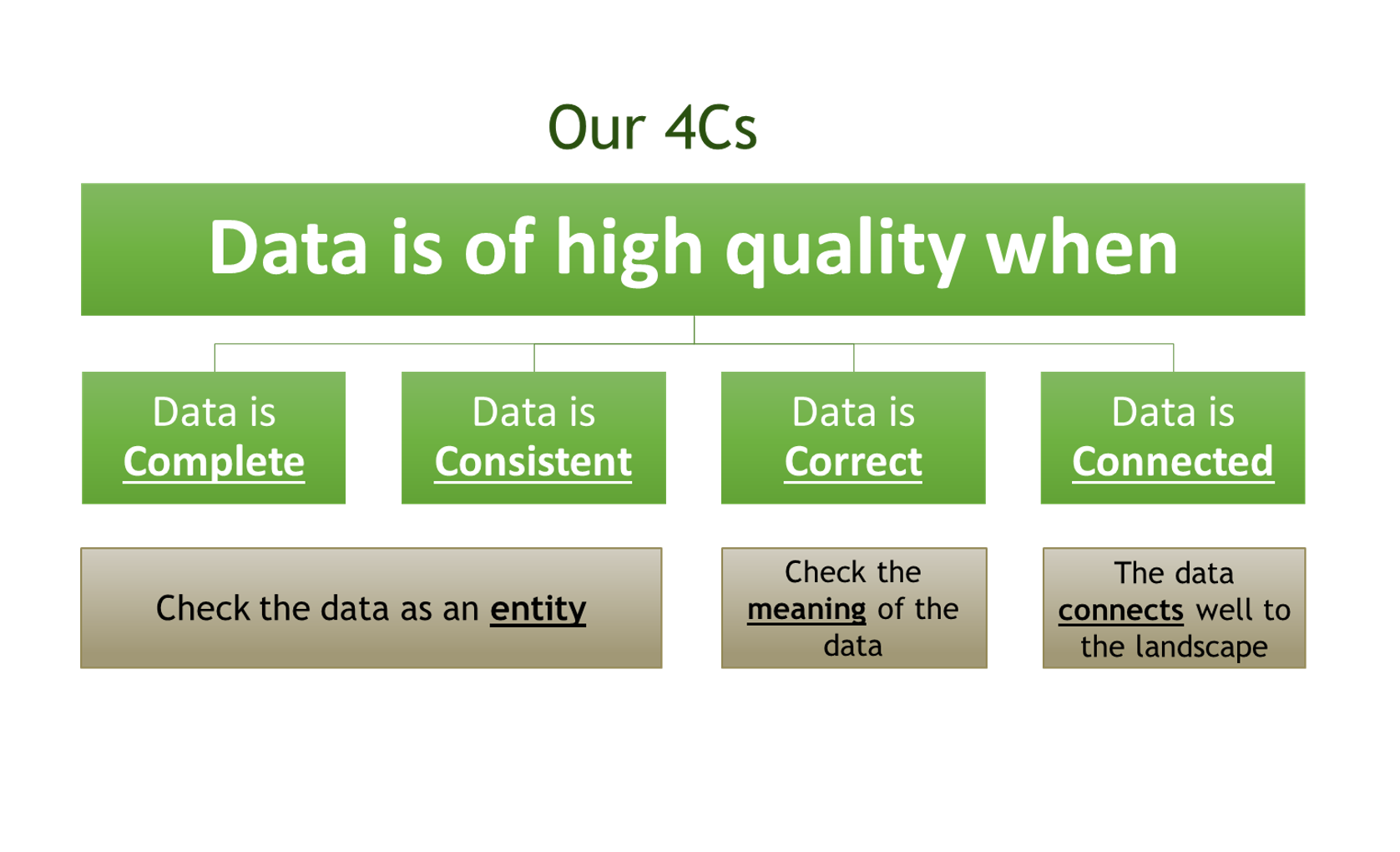Data is complex. On one end, it needs to power the systems that the organization has built. On the other, it needs to provide meaning, used for running the business or for decision making. Finally, it might need to connect multiple systems within the corporate IT landscape. The data quality is not a one-dimensional need that can be satisfied with a one-dimensional solution. Therefore, we developed our 4Cs approach.
The origin of the 4Cs approach
Asking different functions in the company if the data is of good quality could give different answers. Even further, our research indicates that depending on the areas of expertise or corporate functions, the response could be vastly different. For example, (1) an IT specialist is focused on the ability of the data to serve the technical purposes of the system or to feed into a software. In simple words, when the data makes the systems break, it is not of good quality. This demand is understandable as the data powers the IT systems. (2) On the other hand, talking to functional professionals, like finance, marketing, and business operation managers could produce different example. There, the data must enable the business processes, i.e., the business rely on the data to achieve their specific goals. (3) Finally, the data does not usually sit in one system or database, it travels across the organization through complex pipelines, which in technical language are called systems integration. It is possible that data sent from one system would not arrive at the target systems as expected so the people using the second systems cannot achieve their purposes. In other others, the data is not of good quality. The variety to these demands toward the data led us to develop the 4Cs approach, a comprehensive methodology that covers all requirements towards the data. This topic could become technical; therefore, below we will compare the data with a motor vehicle in hope of unpacking it better and make it more relatable.
The goal of the 4Cs
The 4Cs approach aims at detecting issues within the data that can move the company away from its goal. The first 2Cs – “Data is Complete” and “Data is Consistent” are looking at the data as an entity. This is how a software developer would look it for example. To start with our motor vehicle analogy, we should expect wheels, engine, steering system, or chassis as key attributes. Without any of those, we will not have the confidence to use this object as a motor vehicle. Same is with data. In these two sets of checks, we make sure that the records stored in the systems can be defined as data that is capable to serve either technical or business purpose. The next C is the “Data is Correct”. Here, we check if the data can be used for the ultimate purpose it is intended. These are usually the needs that the business community has towards the data. To continue with the motor vehicle analogy, we first ask what the purpose, this vehicle would be used for, is. If the answer is “to drive me to the grocery store” we will check if the vehicle has cargo storage, it is of appropriate size and even deeper, if the vehicle can be parked in a small parking lot. The final C is “Data is Connected”. Here we make sure that the data can successfully travel across the system landscape. In other words, we check if, for example, the data that sits in the CRM system has arrived as expected in the ERP system. To complete the vehicle analogy, this is where we check if the vehicle complies with specific requirements coming from the external world, like for example, that the refueling nozzle or the charging port is compatible with the gas station standards or the charging outlets around us.
The 4Cs output
To summarize, after we have applied our 4C approach, we can be confident that we have an object we can identify as a motor vehicle; it can deliver on our purpose and it is technically sound to interact with the outside worlds without giving us headache. With data is the same. Our 4Cs approach ensures that we are confident that we can cover all needs that anyone in the organization might have towards the data. We make sure that the organization can use it, end-to-end, for all technical and business purposes it might need it for.

